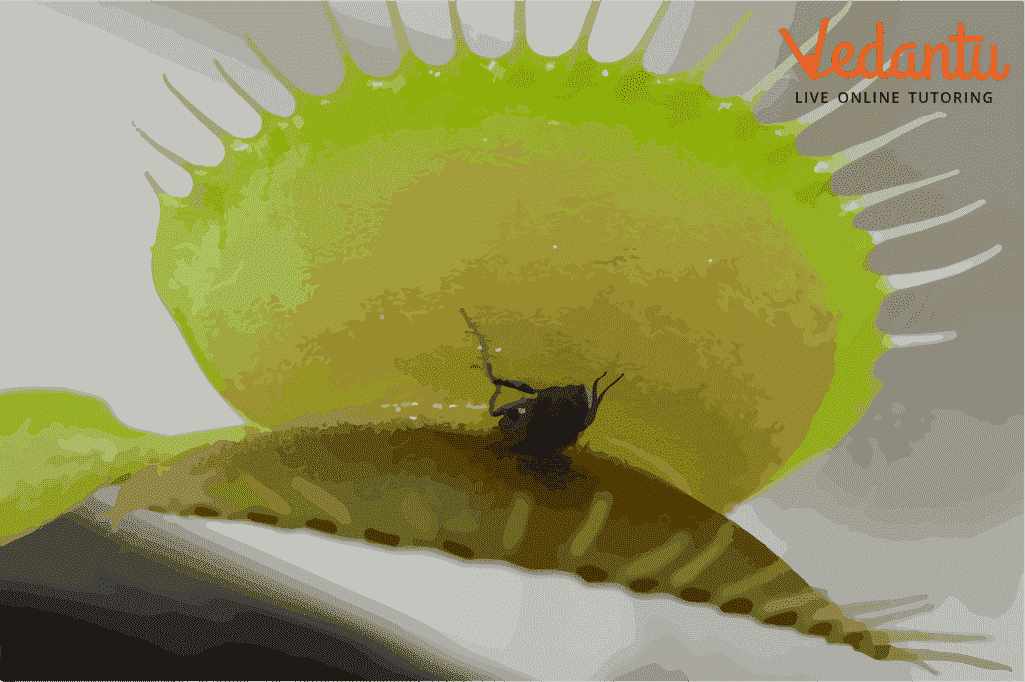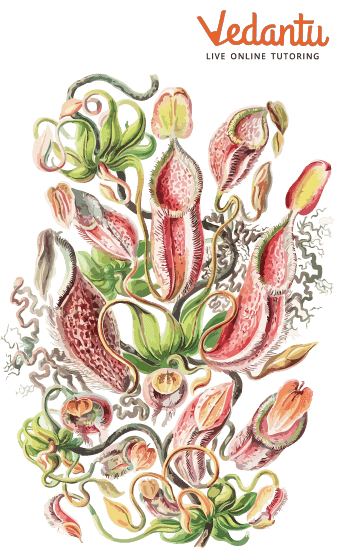




Carnivorous Plants
Carnivorous plants catch and eat animals to get the nutrients they need. They are often called "plants that eat insects" because they usually see insects. Carnivorous plants can grow in places where the soil is thin or not very rich in nutrients because they get some of their food from animals. This is true for acidic bogs and rocky outcrops with little nitrogen in the soil. In 1875, Charles Darwin wrote the first well-known book about plants that eat other living things.

Carnivorous Plant
This is a true case of carnivory on the part of plants. In five families, there are more than twelve genera. About 625 of these species hunt and catch their food, make digestive enzymes, and use the food's nutrients. More than 300 species in several genera also have some of these traits but only some. Most people call these "protocarnivorous plants."
What is a Carnivorous Plant?

Carnivorous Plants
A plant that eats insects and sometimes small animals is called a carnivorous plant. But don't worry, people aren't on the menu! Most plants get the nutrition they need from the soil. Nutrition, or the vitamins plants need to grow, are usually found in food.
Their roots bring the food from the ground up to the plant. Even though carnivorous plants have roots, they typically live in places where the soil isn't perfect and doesn't give them much food. Because of this, they have to catch and eat insects and other small animals to get the nutrition they need. As you might guess, they have to think outside the box to see their food.
Why do Plants That Eat Bugs Do This?
Well, it's because they've changed to fit their environment. Most plants can't live without water, sunlight, and nutrient-rich soil. In the same way, we need vitamins to stay healthy. Most carnivorous plants live in bogs, which have little to no nutrients in the soil or water. These plants have changed their leaves and bodies so they can eat animals and get the nutrients they need.
The next question is, "What do they eat?" Carnivorous plants usually eat insects. So we could call them plants that eat insects. But there are a few times when that rule doesn't apply. Carnivorous plants are not picky about what they eat. They will eat anything that crawls, lands, or flies into their traps. Some pitcher plants and fly traps can eat small amphibians, birds, mammals, and reptiles.
As for how long they live, they can live as long as conditions are good, which could be months or years. If you care for a carnivorous plant, you decide how long it will live. plants do it.
Carnivorous Plants Facts for Kids
Carnivorous plants sometimes looks like tiny champagne glasses.
The arnivorous plants' top and interior are coated with sweet-smelling, slippery honey.
Insects fall into the Carnivorous plants as they drink. Plants decompose them there.
Some Carnivorous plants can eat rodents or frogs.
Carnivorous plants like wetlands. They dwell in nutrient-poor, damp soil.
The U.S. has the most carnivorous plants. Venus flytraps only grow in North Carolina.
Carnivorous plants intrigue people—some attempt to poach them.
Conclusion
Carnivorous plants are interesting because their distinctive shapes are fascinating, even if they're not capturing insects. You should avoid picking plants from the wild, though, because most of them are pretty rare. The biggest dangers to carnivorous plants are losing their habitat and taking too many of them.
If you want to grow carnivorous plants at home or in the classroom, buy them from a reputable grower who starts them from seeds or uses tissue culture or vegetative means to produce them.
FAQs on Facts About Carnivorous Plants
1. What are borderline situations?
A plant that eats other things must find, kill, and eat its food. Then, it must also gain something from eating the prey. This will usually result in amino acids and ammonium ions. In some situations, plants catch their prey but don't eat it. Instead, they work together with another organism that eats the prey.
One example is a species of sundew called Roridula that lives together with an assassin bug. The bugs eat the bugs they catch. The nutrients in the bugs' waste help the plant grow.
2. How do carnivorous plants catch their food?
Carnivorous creatures usually hunt their prey and have large, keen teeth to help them consume what they capture. Carnivorous plants capture and consume insects and other tiny animals using specialised leaves and chemicals since they cannot move or grow teeth.
Our bodies employ chemicals in the stomach to digest food or break it down, so it may be used as fuel. To supplement their diets, carnivorous plants produce compounds that aid in the digestion of tiny animals and insects.
3. How do carnivorous plants process the food they eat?
Most plants that eat bugs make digestive enzymes that break down their food into healthy bug stew. Some make good homes for bacteria that live with them and help them break down their food.
However, being Carnivorous doesn't mean that all plants that trap or kill animals are carnivorous. Some species of Aroid and Aristolochia catch insects in their flowers to help them spread pollen.









